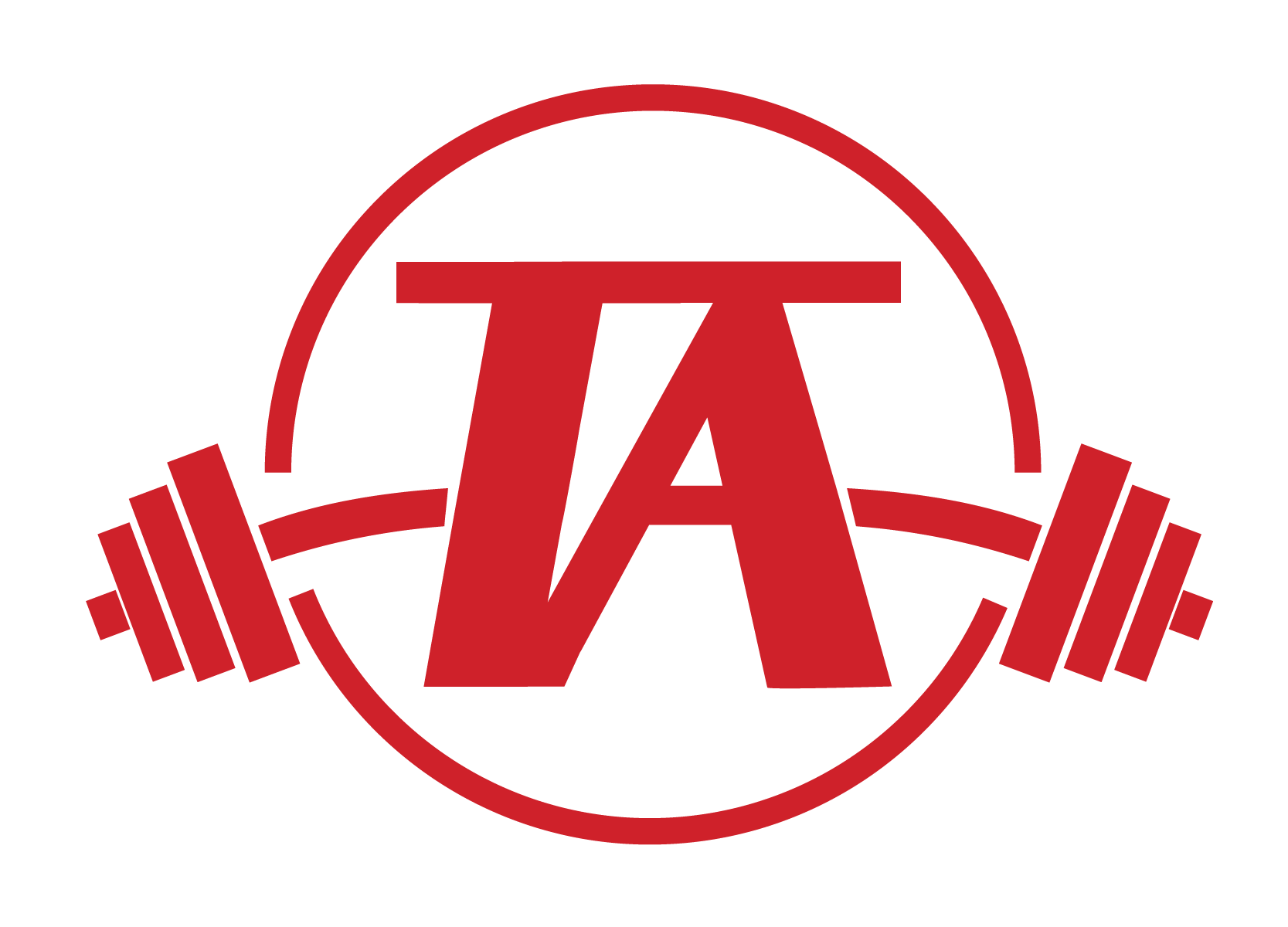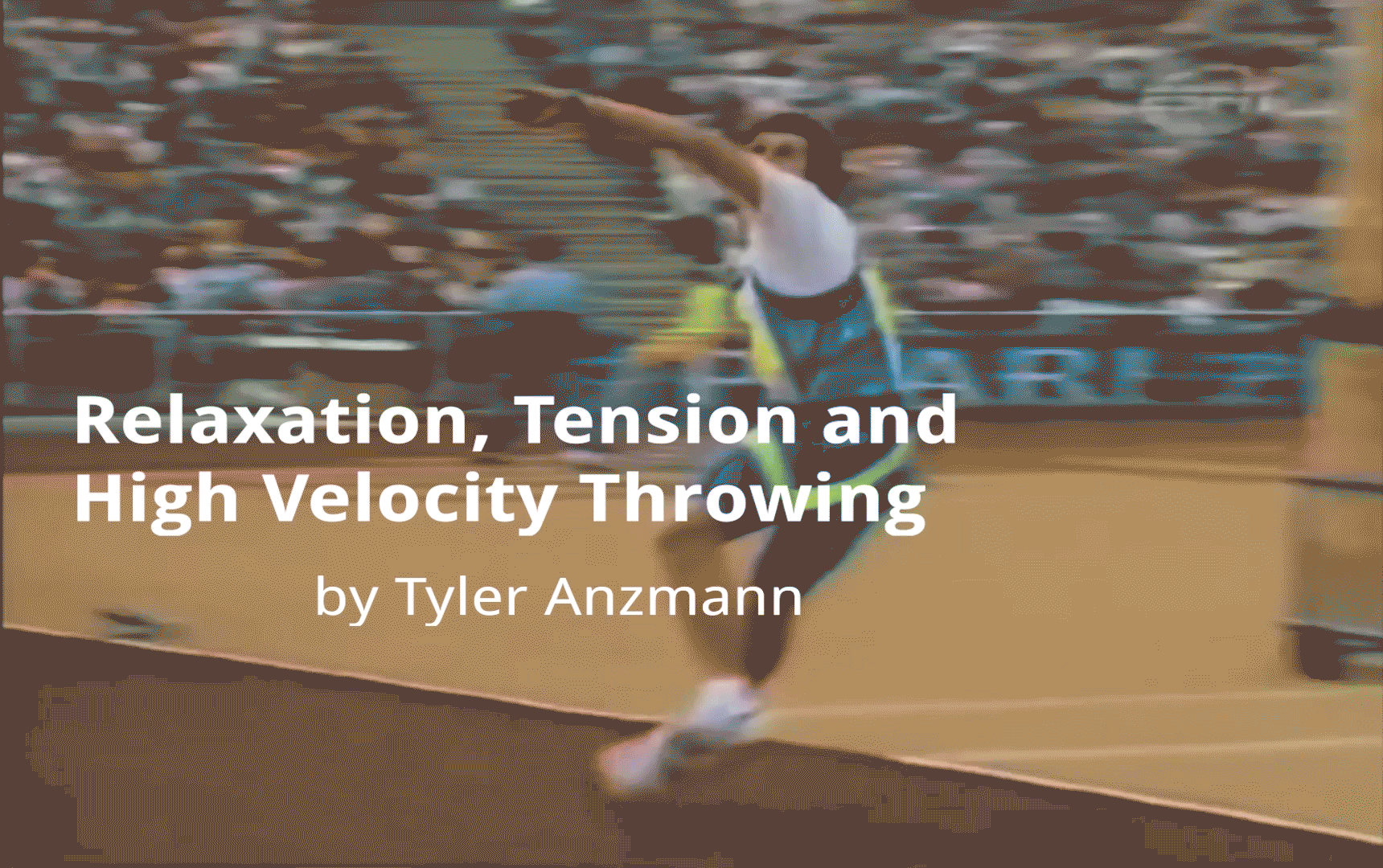I’ve talked a lot about how increasing muscle tension and rate of force development is critical for high velocity throwing, but how does relaxing a muscle impact performance? Coaches have long known the ability to rapidly relax a muscle before and after a muscle contraction is what separates some of the fastest, most powerful athletes from their counterparts.
Carl Lewis, Coach Tom Tellez, Coach Clyde Hart, and many others have talked about the importance of relaxation to their own performance or that of their sprinters. Muay Thai practitioners aren’t the strongest athletes on the planet but they apply so much force via their kicks because they can stay relaxed until just before impact, timing their tension perfectly. If you watch most great sprinters their jaws are relaxed, their hands are relaxed, and their faces and shoulders bounce. These same principles can be applied to high velocity throwing to help make training more effective and movement more efficient.
Starting at the 0:44 mark you can see how well Usain Bolt moves between tension and relaxation. Video credit: Nicholas Eckett
This is because these athletes are trying to avoid excessive tension in regions of the body where it’s not required in order to conserve energy, and they intuitively understand the findings of the Russian scientist Dr. Matveyev. He found that one of the important differences between elite and novice athletes was how quickly they were able to relax. This makes a ton of sense when we think about the body as a kinetic chain and apply this to high velocity throwing.
The Science of Relaxation and Tension
Relaxation and output go together because of the need for an athlete to find deep positions, relative to their body type, and effectively lengthen the distance over which they apply force. We’ve talked about this principle of lengthening a lever in the past in the context of sprinting and throwing. Additionally, relaxation allows the pre-stretch to happen a bit faster, enhancing the stretch shortening cycle, and it can help reduce antagonist activation which can ultimately increase the output. Even in a high force, low velocity sport like powerlifting Louie Simmons found that when his lifters lowered their weights too slowly it negatively affected their concentric speed and their peak strength levels (Simmons, 2007). If you want to use your body like a spring you have to load it relatively fast and too much tension can keep that from happening.
This is due to co-contractions occurring. Co-contractions occur when antagonist and agonist muscles contract at the same time and with the same force to produce a net zero torque, which leads to no movement at the joint.
Co-contractions can be extremely beneficial when transferring energy, as they result in greater joint stiffness, but when getting into position, or producing force they can be problematic. Think about this in two different ways. When the lead foot contacts the ground and bears weight, co-contractions at the ankle, knee, and hip lead to a stable base and help transfer energy from the lower body to the torso.
However, when the arm is swinging and making its way into position prior to acceleration we need it to stay as relaxed as possible in order to reach a deep enough stretch position that we can take slack out of the system and have a powerful acceleration of the arm. If stiffness occurs too early during the arm swing range of motion (ROM) will be restricted, and the pre-stretch of the elastic components will be less effective.
Muscle-tendon unit slack is a concept made famous by Frans Bosch. Basically, at rest there is slack in the muscle-tendon unit and before force can be produced, the slack must be removed. He uses the example of a rope attached to a car. Before you can pull the car, the rope must be taut. The same principle applies to the body.
There are two basic strategies that can be used during sports in order to remove slack and they are countermovements and co-contractions. Countermovements are most effective when time pressures are not as pressing and force is being developed (arm getting into position prior to acceleration). Co-contractions are more appropriate/effective when time pressures are significant and energy is being transferred (front foot strike).
The reduction in co-contractions may be especially important for throwers as this not only allows for greater force production, but may also have an impact specifically on early rate of force development (RFD), which occurs in >0.1 seconds (Van Dyke, 2015). Pitchers have about 0.145 seconds from foot strike until ball release (Stodden et al., 2008) to apply as much force as possible to the baseball, and this time frame may be even shorter in higher velocity pitchers. This makes RFD, and possibly early RFD in particular, especially important for pitchers.
Training
So, the question becomes, how do we train to relax faster and/ or time relaxation more appropriately during specific tasks?
I’ll take you through a few ideas, from the most general to the most specific.
Active and Passive ROM
The first piece to the puzzle is to make sure that you can control the necessary end-ranges of motion for throwing. Passive ROM without control or strength becomes a risk factor for injury, so having similar passive and active ROM becomes a key. For example, this means having active glenohumeral external rotation that’s within 5-10 degrees of your passive glenohumeral external rotation because there will be significant demand on these tissues during layback.
Strength at End Ranges
The next piece is gaining strength at those end ranges, because if the body feels unsafe in deep positions the co-activation will be greater, meaning output will be reduced (Van Dyke, 2015). Training through a full range of motion and using isometric holds at end ranges tend to work well for this purpose.
Antagonist Strength
Getting the antagonists strong (without creating huge imbalances) can be huge as better/faster deceleration allows for acceleration to occur longer. In the context of throwing this may mean getting the biceps and external rotators strong so that the arm can accelerate longer.
Drop Catch Movements
Drop with the speed of gravity and abruptly stop the movement before performing the concentric portion. This can help improve the stretch shortening cycle by improving the isometric or amortization portion of the movement and causing a “steeper V” as Cal Dietz would say.
Oscillatory Training
From there oscillatory training can be added. Oscillatory training involves basically bouncing through a specific, smaller, ROM. This forces the muscles to contract and relax quickly and can offer a nice bridge between the weight room and plyometric and ballistic movements.
Sprint-Float-Sprint
Sprint-float-sprint is a training modality used in track and field which is being adopted more frequently by other sports. The athlete gets a rolling start, as they would for a 10m fly, performs a max velocity sprint for a 10-20m distance, then “relaxes” (cruises at 90% or so) for the next 10-20m segment, then performs a max velocity sprint for the final 10-20m segment. The floating portion is often not significantly slower than the max velocity portion and can help give the athlete a better feel for high output with a more relaxed state.
Velo Horseshoes
As I’ve written about in the past, Velo Horseshoes allows athletes to gameify their training, stay relaxed during high output throwing, and tends to help athletes time their intent better. The line between well-timed intent and corruptive intent is thin. Velo Horseshoes can help with this problem and often leads to unintended PRs.
Conclusion
High intent is an undeniably important part of high velocity throwing. However, if you or your athletes can’t remain relaxed and time that intent well, the velocity will be lower than expected. Gearing training toward well timed relaxation and tension can be a game-changer for some athletes.
Give these methods a try and see what you think.
If you’re interested in individualized training contact me and let’s set up a time to talk.

